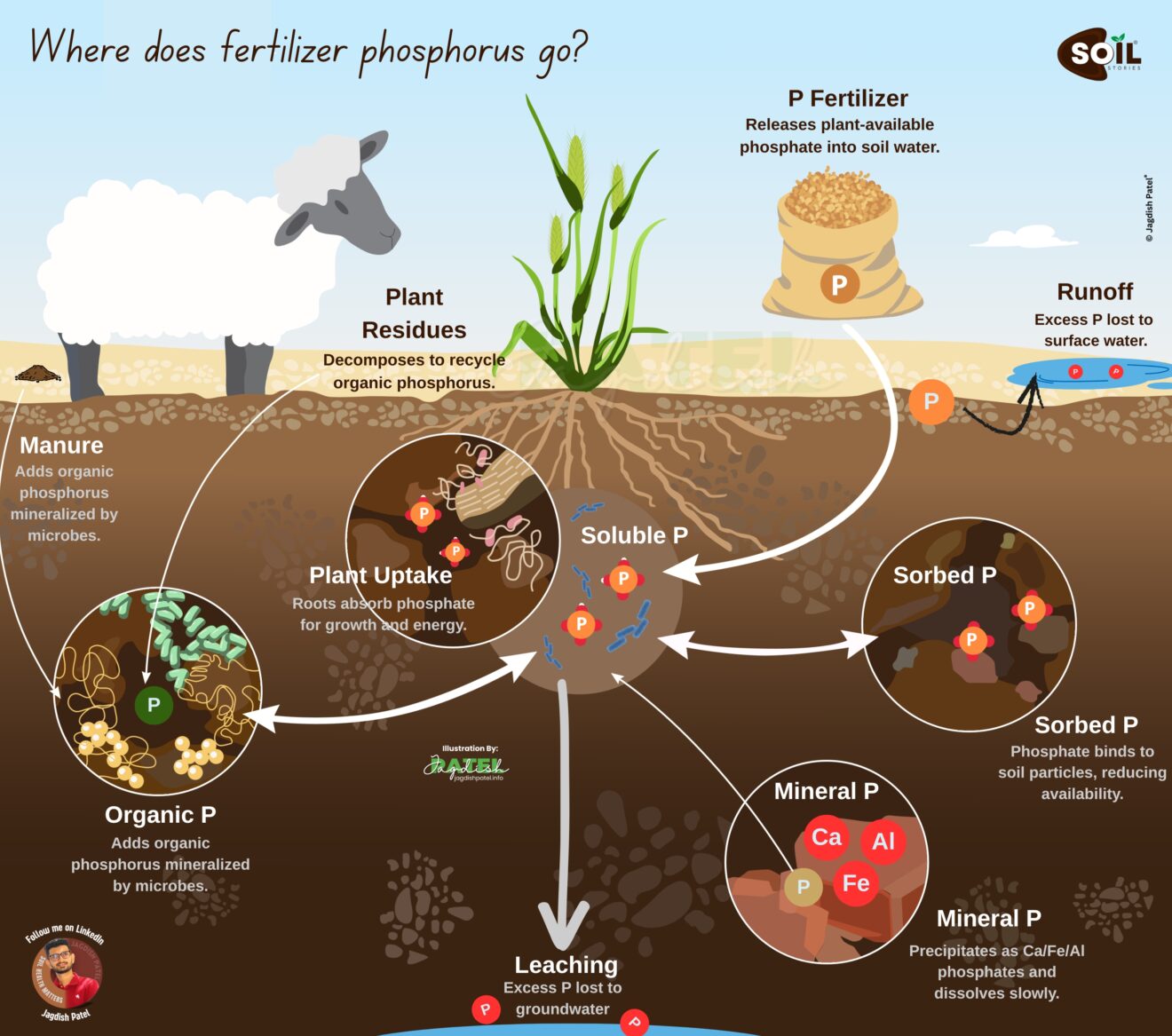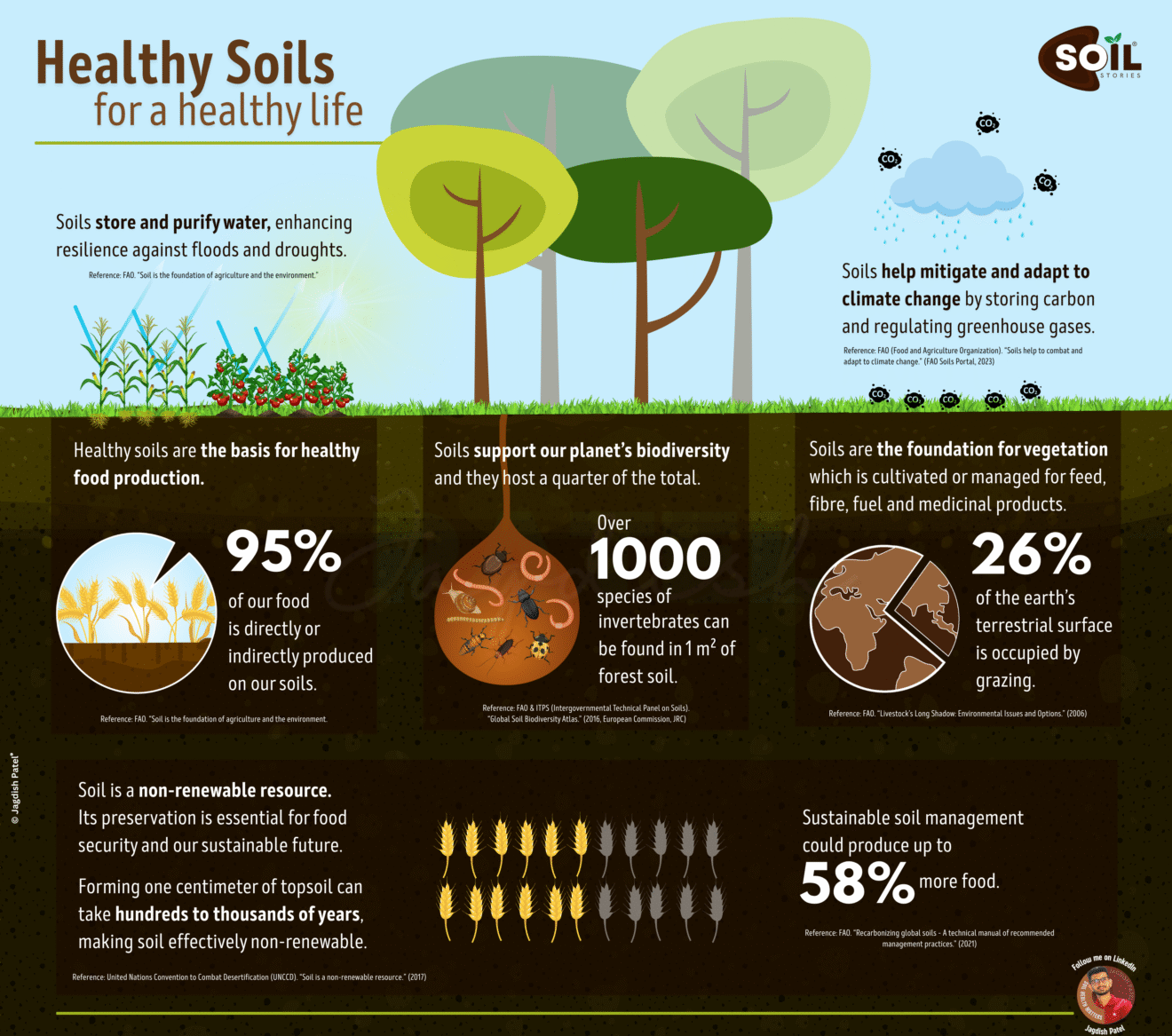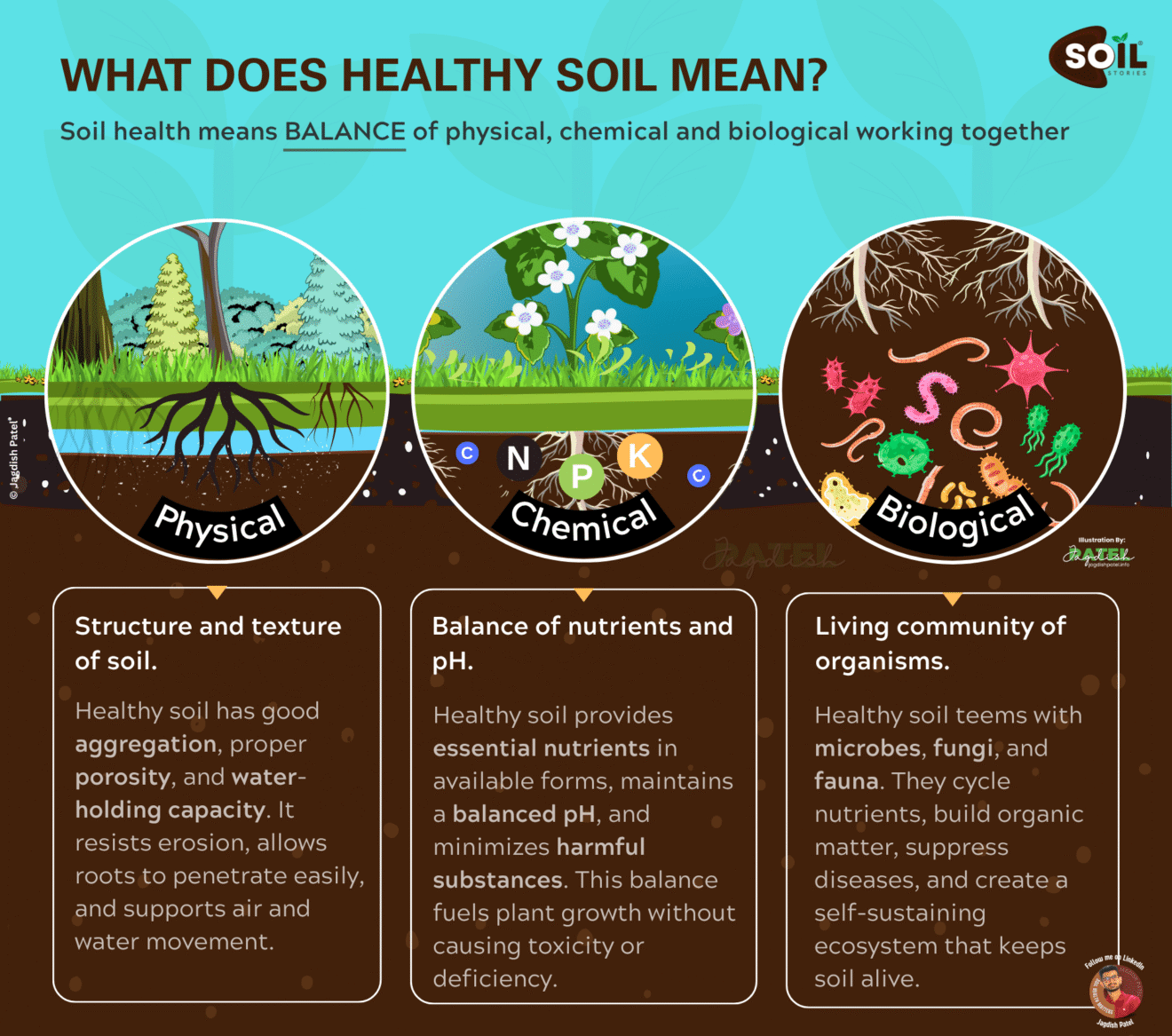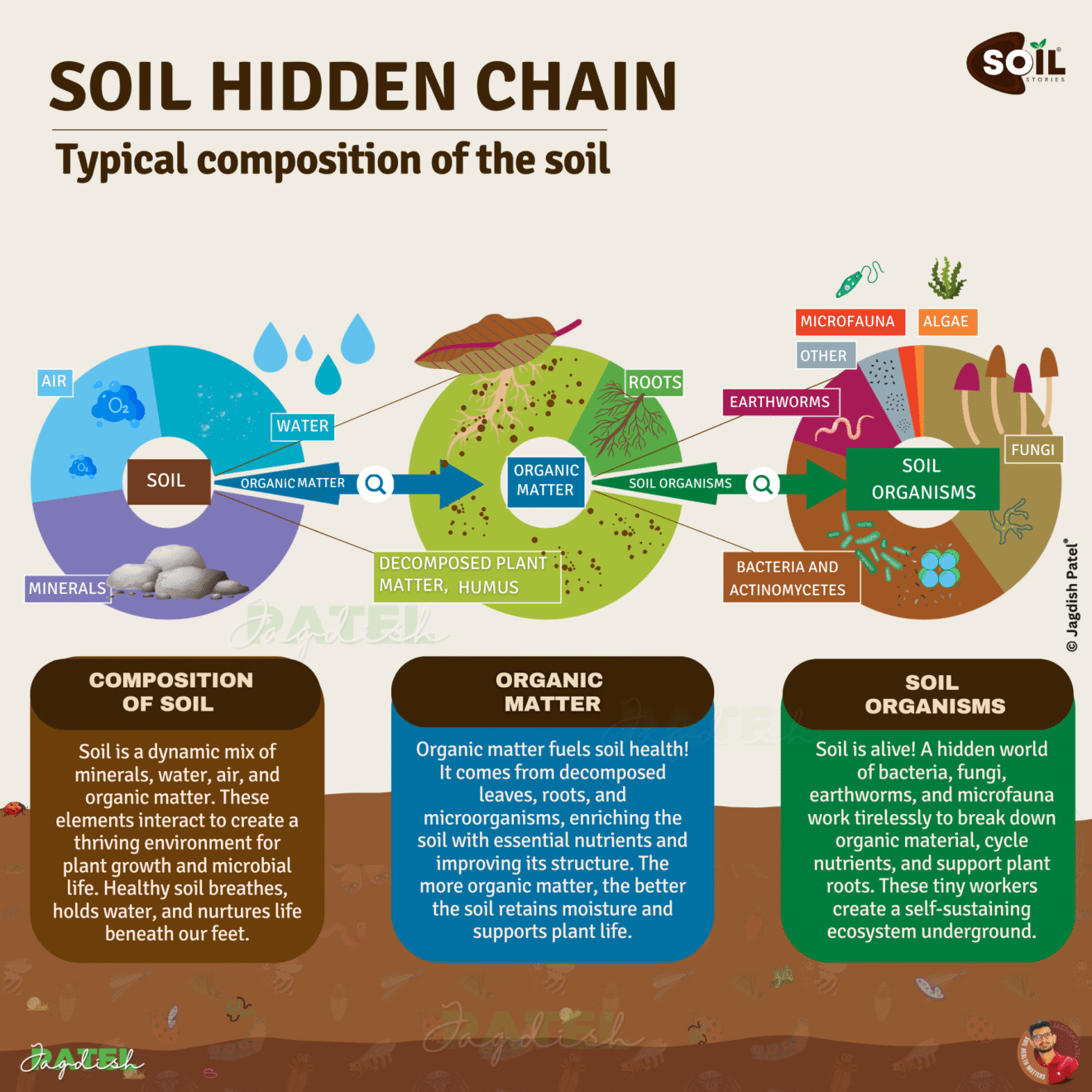Soil is often seen as an endless filter, a place where waste, chemicals, and residues can be left behind with the assumption that it will somehow cleanse itself. This misunderstanding has driven decades of harmful practices. Now the soil is revealing what we have been putting into it for years. We see it in the quality of our water, the health of our food, and the state of our environment.
Soil is a complex living ecosystem that breathes, cycles nutrients, stores carbon, and sustains life. Like any living system, it has limits. When these limits are crossed, the damage is difficult and sometimes impossible to reverse. This is why soil pollution prevention must be treated as a critical global priority.
The Science of What Happens When Pollutants Enter Soil
When pollutants enter soil, they do not simply disappear. I created the accompanying illustration to show exactly what happens when contaminants interact with the living soil environment. Each pathway in the image is marked with a letter to help explain the journey of pollutants.
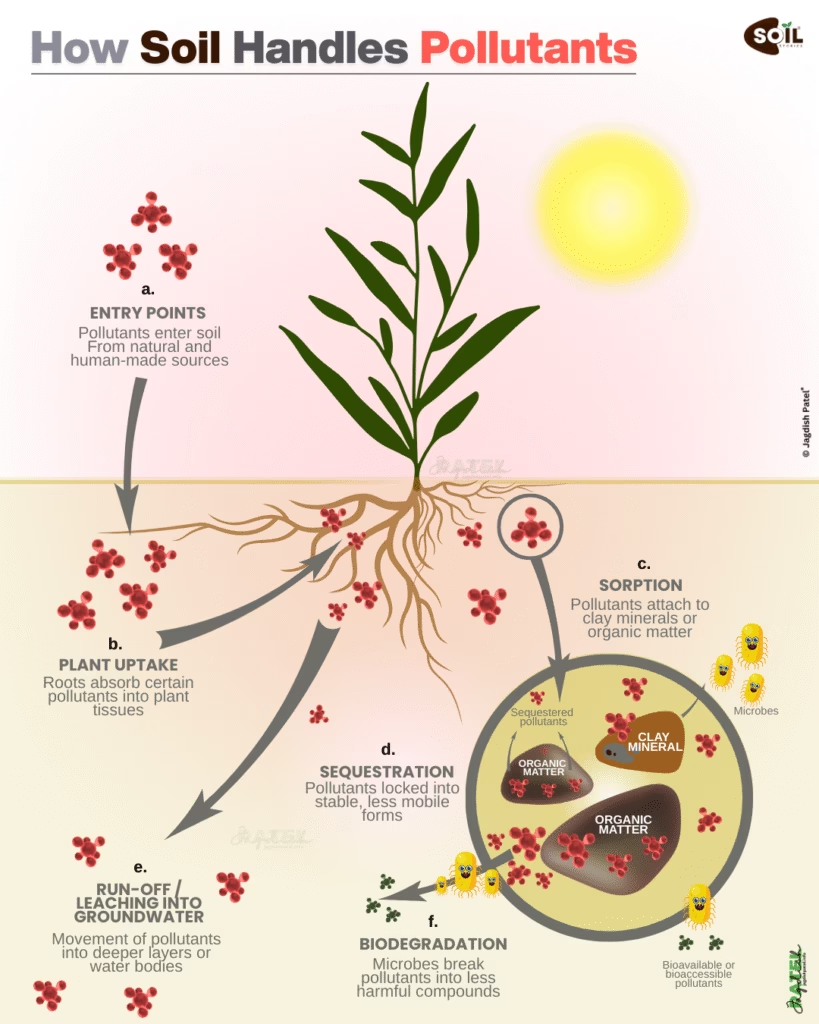
a. Pollutant Entry Point
Pollutants enter the soil from a variety of sources, both natural and human-made. These include industrial waste, agricultural chemicals, sewage sludge, mining residues, and atmospheric deposition. At this stage, the pollutants are mobile and can move in different directions depending on soil properties, water movement, and biological activity.
b. Plant Uptake
Some pollutants are absorbed by plant roots along with essential water and nutrients. Once inside the plant, these contaminants may accumulate in leaves, stems, fruits, or grains, ultimately entering the food chain. Heavy metals such as cadmium or lead, as well as pesticide residues, can move this way, posing risks to both human and animal health.
c. Run-off and Leaching
Excess rainfall or irrigation can wash pollutants away from the soil surface or push them deeper into the soil profile. Surface runoff carries them into rivers, lakes, and wetlands. Leaching allows them to seep into groundwater supplies. This pathway represents a direct risk to drinking water quality and aquatic ecosystems, and once contamination reaches groundwater, removal becomes extremely difficult.
d. Sequestration and Sorption
Some pollutants bind tightly to clay minerals or organic matter in the soil through a process called sorption. In other cases, they become locked into stable chemical forms or enclosed in soil aggregates, which is known as sequestration. These processes can reduce immediate mobility and bioavailability, but the pollutants are not eliminated. They can be released again if soil conditions change, for example through pH shifts or erosion.
e. Biodegradation
Soil microbes, including bacteria and fungi, can break down certain pollutants into less harmful compounds. This process, known as biodegradation, is one of nature’s most powerful tools for cleansing soil. However, it is dependent on multiple conditions such as adequate moisture, proper temperature, the presence of oxygen, and the specific chemical nature of the pollutant. Many industrial compounds and heavy metals cannot be fully degraded by microbial activity alone.
The illustration also shows the critical role of organic matter and clay minerals in influencing pollutant behavior. Learn more about the difference between organic matter and organic fertilizers and how each affects soil health and pollutant binding capacity.
While these pathways demonstrate soil’s resilience, they require significant time and energy. In many cases, pollutants remain for decades, quietly threatening ecosystems, food security, and human health.
Global Data on Soil Pollution and Degradation
A recent study published in Science and reported by The Guardian estimates that up to 17 percent of the world’s cropland is contaminated with toxic heavy metals such as arsenic, cadmium, chromium, and lead. These contaminants put as many as 1.4 billion people at risk, especially in parts of South and East Asia, the Middle East, and Africa.
The United Nations Educational, Scientific and Cultural Organization (UNESCO) warns that as much as 75 percent of global land is already degraded, with projections showing this figure could rise to 90 percent by 2050. According to Earth.org, the world is losing 100 million hectares of fertile soil each year, equivalent to four football fields every second.
Causes of Soil Pollution
Soil pollution has multiple causes. Industrial activities release heavy metals, hydrocarbons, and synthetic chemicals into the environment. Agricultural practices introduce large quantities of synthetic fertilizers and pesticides. Urban expansion and waste mismanagement add untreated sewage and landfill leachate to the soil. Mining leaves behind tailings rich in toxic elements that can persist for centuries.
Without adequate controls, pollutants accumulate year after year, steadily degrading soil fertility and altering its structure. Over time, these changes affect everything from crop yields to biodiversity.
The Role of Soil Microbes in Pollution Breakdown
In one handful of healthy soil, there can be billions of microorganisms. These organisms are responsible for nutrient cycling, organic matter decomposition, and in some cases, pollutant breakdown. Certain microbes have evolved the ability to metabolize harmful compounds, transforming them into less toxic substances. This natural capacity is the basis for bioremediation strategies used in environmental cleanup.
However, microbial activity depends heavily on soil conditions. Contaminants that are too concentrated can kill beneficial microbes, halting natural recovery processes. Some pollutants, particularly heavy metals and persistent organic pollutants, are resistant to microbial degradation and can remain unchanged for decades or centuries.
Why Prevention Is Better Than Remediation
Restoring polluted soil is costly, labor-intensive, and often incomplete. Physical and chemical remediation methods can remove some contaminants, but they rarely restore the biological richness that makes soil truly fertile. Bioremediation can help, but it requires the right microbes, environmental conditions, and long time frames.
Preventing pollution is far more effective. Keeping harmful substances out of the soil protects its biological integrity and ensures it can continue to provide essential ecosystem services such as food production, water filtration, and carbon storage.
Proven Methods for Soil Pollution Prevention
The FAO Global Soil Partnership outlines several strategies for preventing soil pollution:
- Adopt Regenerative Agriculture : Crop rotation, cover cropping, reduced tillage, and the use of organic amendments maintain soil health and reduce dependence on synthetic inputs.
- Manage Waste Properly : Ensure industrial and household waste is treated before disposal to prevent contaminant leakage.
- Control Erosion and Runoff : Use buffer strips, hedgerows, and wetlands to intercept pollutants before they enter soil or water bodies.
- Use Phytoremediation and Bioremediation Where Needed : Select plants and microbial inoculants that can help clean moderately polluted soils.
Practices like crop rotation, cover cropping, and the use of compost strengthen soil health while reducing dependence on synthetic inputs. Discover the benefits of regenerative agriculture and how it can prevent soil contamination while improving biodiversity.
Policy and Governance Support
The Global Soil Partnership works with governments, scientists, and communities to promote sustainable soil management. International agreements emphasize prevention first, applying the polluter pays principle, and using nature-based solutions to restore degraded soils (UNEMG Report).
What You Can Do Today
You can help protect soil by choosing products from farms that prioritize soil health, reducing your chemical footprint, supporting local and national soil protection policies, and contributing to restoration projects in your area. Sharing knowledge about soil pollution and prevention is one of the simplest yet most powerful actions you can take.
The Emotional Connection to Soil
Beyond the science, soil is part of our shared human story. It holds the memory of ancient forests, the nutrients of countless harvests, and the seeds of future generations. To pollute soil is to betray that inheritance. Healthy soil is not only the foundation of agriculture. It is the foundation of life. When we protect it, we secure clean water, safe food, and a stable climate for ourselves and those who come after us.

